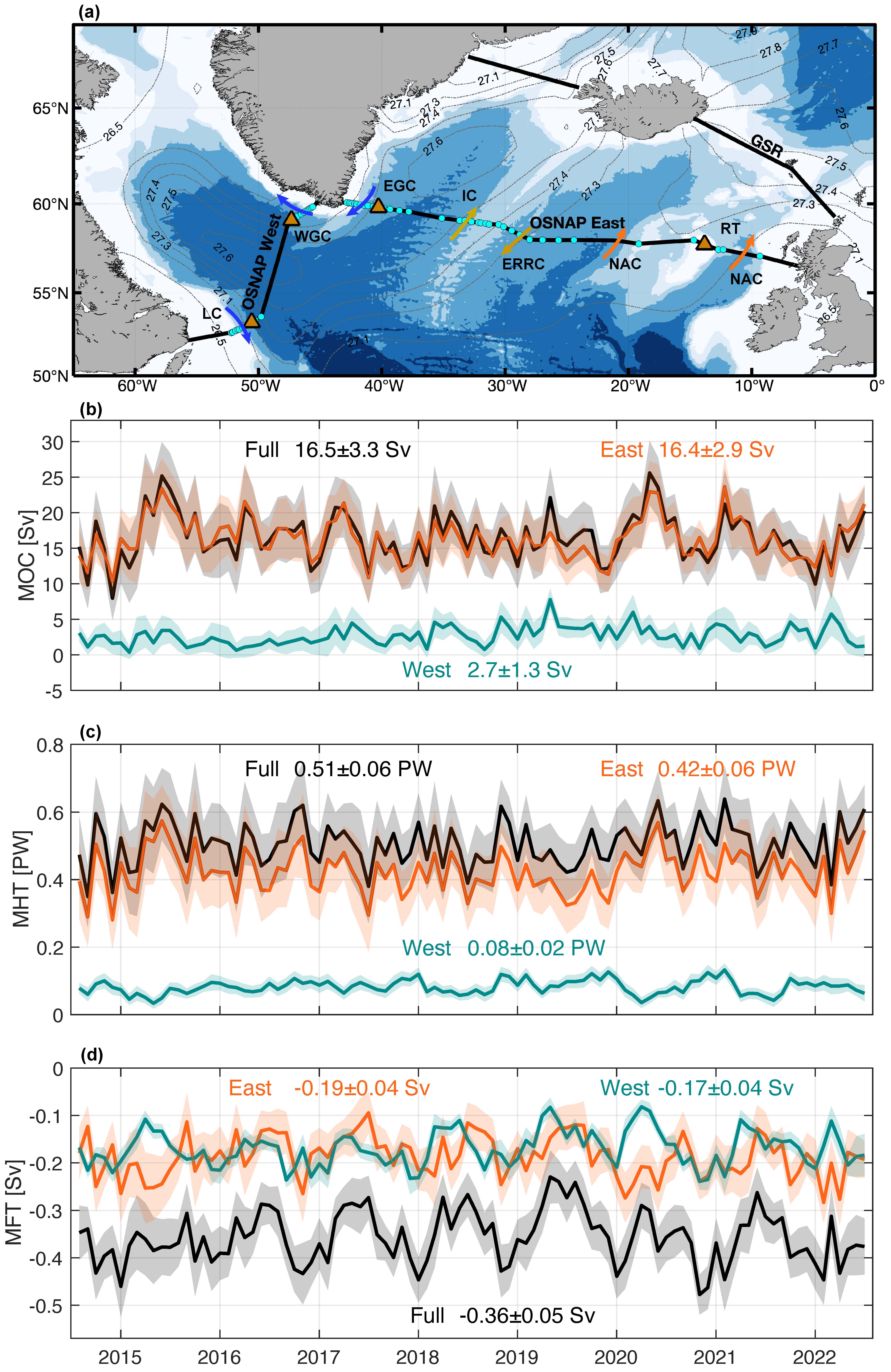Interannual variability of the Subpolar North Atlantic MOC
Published in Geophysical Research Letters, 2025
Variability of the AMOC has drawn extensive attention due to its impact on the global redistribution of heat and freshwater. Here we present the latest timeseries (2014–2022) of the Overturning in the Subpolar North Atlantic Program (OSNAP) and characterize MOC interannual variability. We find that any single boundary current captures ∼30% of subpolar MOC interannual variability. However, to fully resolve AMOC variability, a wide swath across the eastern subpolar basin is needed; in the Labrador Sea both boundaries are needed. Through a volume budget analysis for the subpolar basins’lower limbs, we estimate the magnitude of unresolved processes (e.g., diapycnal mixing) required to close the mean budget (∼2 Sv). We find that in the eastern subpolar basin surface‐forced transformation variability is linked to lower limb volume variability, which translates to MOC changes within the same year. In contrast, this linkage is weak in the Labrador Sea

OSNAP MOC time series
Fu, Y., Lozier, M. S., Bower, A., Burmeister, K., Carrilho Biló, T., Cyr, F., et al. (2025). Characterizing the interannual variability of North Atlantic subpolar overturning. Geophysical Research Letters, 52, e2025GL114672. https://doi.org/10.1029/2025GL114672
